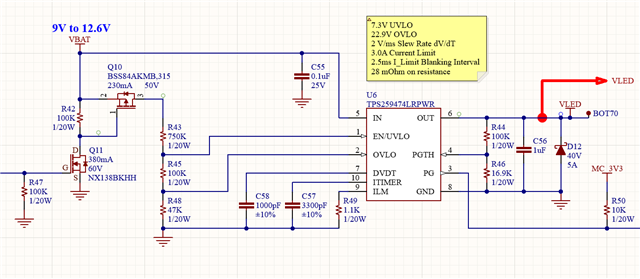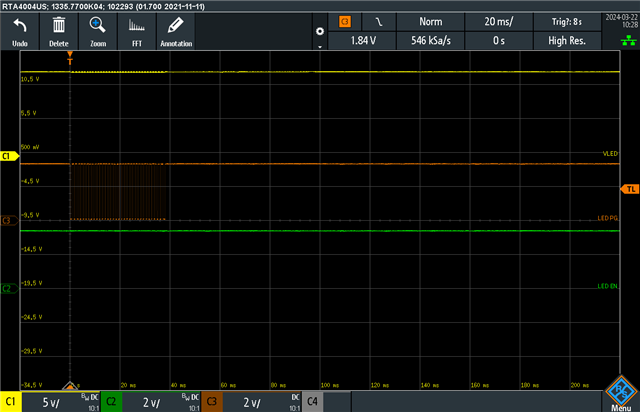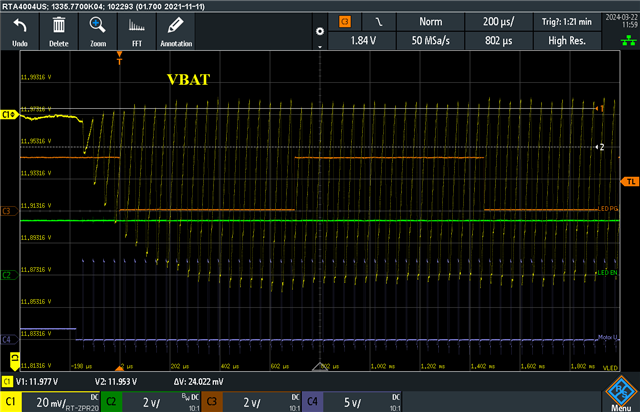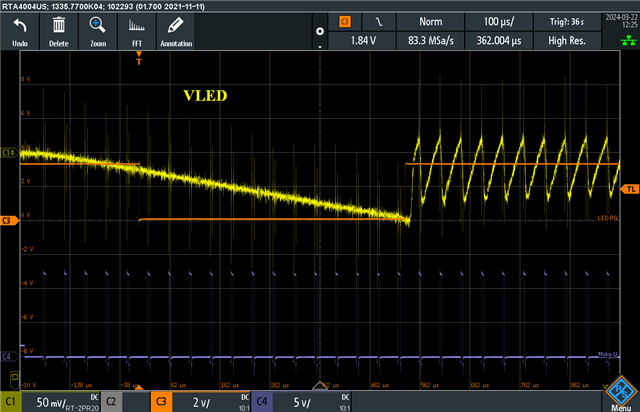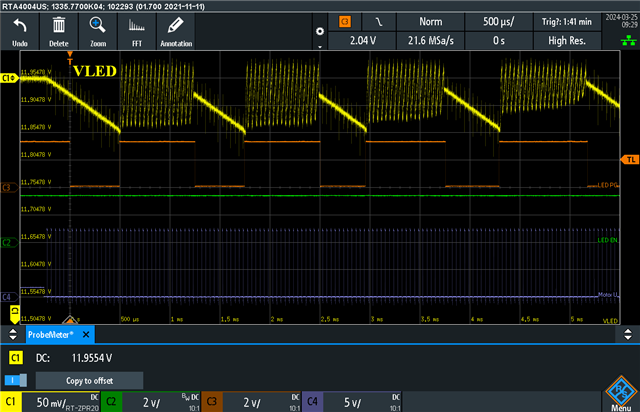Other Parts Discussed in Thread: TPS25946
I am testing a circuit where the PG output is chattering when a 3-phase brushless motor is driven from the same board. The motor runs off VBAT, which is also the input to the eFuse. The IN, OUT, EN, and PGTH pins are all clean with no glitches nor dropouts. There are many ceramic bypass caps on VBAT all located close to this circuit. There is no good reason that I can think of for this PG chattering to occur. Any ideas?
